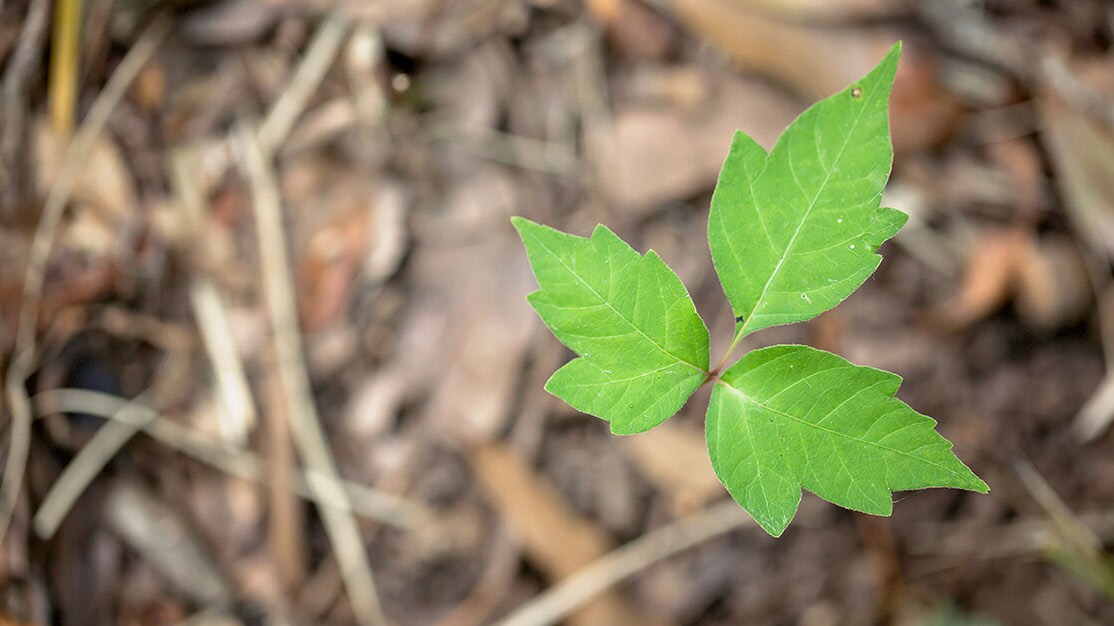How to Treat Poison Ivy, Poison Oak and Poison Sumac

Poison ivy, poison oak and poison sumac plants can cause extremely bothersome rashes
(called "allergic contact dermatitis") when most people come into contact with them. Each of these plants contains the compound urushiol-a light, colorless oil found in the leaves, stem, flowers, root and sap of the plants that causes the rash. Learn how to treat poison sumac, ivy and oak, including home remedies, and how to reduce your risk of future rashes.
Symptoms of poison ivy, poison oak and poison sumac rash include:
- Intense itching
- Skin redness
- Skin swelling
- Fluid-filled blisters in a line or streak-like pattern
Symptoms tend to develop between 12 to 72 hours after contact with the plant oil. A rash, even one with open blisters, is not contagious. Symptoms will only appear on the areas of your skin that were actually exposed to the plant oil. However, oil under your fingernails and on clothes or other items can cause the rash to spread to other areas on your body or from person to person.
If you inhaled smoke from burning poison ivy, oak or sumac, you may have trouble breathing. If you have difficulty breathing or swallowing, seek medical help right away.
Home remedies for poison ivy, oak and sumac
A rash from poison ivy, oak or sumac lasts one to three weeks and tends to get better on its own without treatment. Still, there are poison oak, poison sumac and poison ivy treatment options that can help ease itching, soreness and pain caused by the rash. Try these remedies:
- Wash your skin, clothing and everything else that may have oil on it. Wash everything that had contact with poison ivy, oak or sumac in warm, soapy water to keep the oil, and rash, from spreading. Be sure to wash your body, clothing, gardening tools and even your pet's fur. Wear heavy-duty, vinyl gloves while handling the items or washing a pet.
- Take short, lukewarm baths with oatmeal or baking soda. Adding oatmeal or baking soda to a bath can help ease itching caused by poison ivy, oak or sumac.
- Apply cool compresses to the itchy rash. Wet a clean washcloth with cold water, ring it out and then apply it to the affected area of skin. You can also use a cold water bottle and lay it against the rash. Do not apply ice.
- Resist the urge to scratch. Scratching the rash can cause infection.
- Let blisters be. Blisters protect the raw skin underneath from infection, so leave them alone, even if they open up.
Poison ivy, poison sumac and poison oak treatment
If home remedies for poison sumac, poison ivy and poison oak aren't enough to bring you relief, consider applying calamine lotion or hydrocortisone cream. Applying these over-the-counter products to the rash can help ease itching.
If the above options don't bring you relief, or if the rash covers a large area of your body, see your health care provider. They may prescribe a stronger steroid cream or an oral steroid to relieve itching and swelling. If you develop a skin infection, you may be prescribed an antibiotic.
Symptoms of infection include:
- A temperature above 100 degrees Fahrenheit
- Trouble breathing
- A rash that spreads to your eyes, mouth, genitals or covers more than one-fourth of your body
- Swelling that causes your eyes to swell shut or your face to swell
- A widespread, severe rash
- A rash that contains areas of pus, soft yellow scabs or tenderness
- Itching that seems to be getting worse or keeps you up at night
- A rash that doesn't get better within a few weeks
It's also important to know what medications don't work for poison ivy, oak and sumac. Anything that you rub on your skin that is supposed to stop itching, such as a topical antihistamine, does not help to decrease itching caused by these plants. You should not use antihistamine creams or anesthetic creams that contain benzocaine, nor antibiotic creams that contain neomycin or bacitracin-all products which could make the rash worse.
Prevention
These tips can help to reduce your risk of a rash caused by poison ivy, oak or sumac:
- Learn what poison ivy, oak and sumac plants look like and avoid them. In general, both poison ivy and poison oak have three green or reddish green leaflets per leaf on one stem. Poison sumac has five, seven or more leaflets per leaf that angle up towards the top of the stem.
- Cover yourself. If you garden or hike near these poisonous plants, wear long sleeves and long pants tucked into boots.
- Wear heavy-duty, vinyl gloves when doing yard work or gardening. Do not wear latex or rubber gloves because urushiol can seep through these materials.
- Consider using a barrier cream if you're around these poisonous plants often. Special creams, such as bentoquatam (Ivy Block), create a barrier between the oil and your skin. It leaves a clay residue on the skin and must be reapplied often, about every four hours.
Most cases of poison ivy, oak and sumac fully clear up on their own within a few weeks. If you have a rash that covers a large portion your body, isn't starting to improve after seven to ten days or have symptoms of an infection, see your health care provider. They can recommend treatment options so you feel better.
Clinically reviewed and updated July 2021.